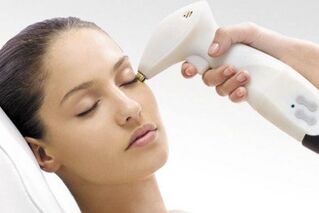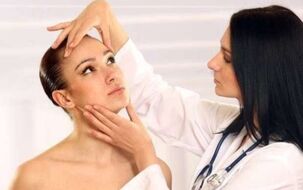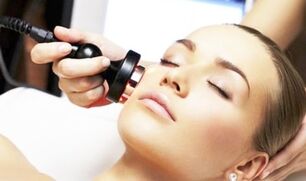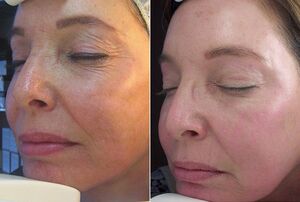For a long time, plastic surgery was the only way to rejuvenate. However, this method has many contraindications and is also associated with certain health risks, as not all of them can be solved with the help of surgery. Fortunately, modern aesthetics offer many anti-aging treatments that are less dangerous. One of the worthy benefits of plastic surgery is laser facelift.
Fortunately, modern aesthetics offer many anti-aging treatments that are less dangerous. One of the worthy benefits of plastic surgery is laser facelift.
What is it?
Laser lifting is a modern, non-surgical way to combat age-related skin changes. This technology aims to improve the quality of the skin. It stimulates the regeneration process (cell regeneration), improves blood circulation in areas exposed to solvents, which helps to smooth out wrinkles.
During the operation, natural collagen is actively produced which provides tissue elasticity. This is especially important for areas with sensitive skin where various regeneration methods are unacceptable.
The difference between laser lifting and other plastic and facelift methods is that this procedure does not involve surgery. The operation is performed with special laser treatment equipment. The light beam enters the skin and acts on weak and dead cells.
Laser facelift can be performed on women and men aged 18 to 70 years. The need for this procedure usually arises after 30 years, when the first signs of skin aging appear.
Usually, beauticians prescribe courses with a solvent forklift, where one session is not enough. Maximum effect is possible 3 months after the last operation. With proper skin care, the rejuvenating effect can last for about three years.
Procedure Tips
Laser lifts help solve a number of problems. The method is intended for patients with the following problems:

- escaped the skin of the eyelids;
- expression and age wrinkles;
- dark circles and bags under the eyes;
- prominent nasal cavity;
- pimples;
- small arrow;
- enlarged pores;
- unhealthy complexion;
- the presence of age spots;
- vascular network;
- sagging double chin;
- neck wrinkles.
Contraindications
Laser lifts are contraindicated in the presence of the following factors:
- acute inflammatory and infectious diseases;
- cancer diseases;
- chronic diseases;
- various blood diseases;
- pregnancy and lactation;
- HIV smit;
- diabetes;
- mental disorders;
- diseases of the thyroid gland;
- epilepsy;
- hepatitis;
- skin diseases of any kind;
- poor blood clotting.
Skin Surface Types
At present, in cosmetic practice, laser lifting is performed using two techniques: ablative and non-ablative. They are different in that each uses a different type of laser.
Ablative
Ablative is the most widely used laser technology.The effect of the light beam is directed at the outer layer of the epidermis, which is constantly in contact with the environment.
During surgery, the vapor gradually dissolves dead skin layers. The facelift that falls off is traumatic but it guarantees the result.
Non-ablative
This technique involves the laser beam penetrating deep into the skin and stimulating the synthesis of collagen and elastin. The top layer of skin is intact. This method of laser lifting helps to improve tissue tone and causes facelift.
Unlike the sealing of a cover, also called a "burn", the non-covering technology is considered to be milder. It is permissible to use the lifting method that is not lifted to affect sensitive skin areas - the eyelids and the area around the eyes.
This technology is not very popular as many beauticians doubt its effectiveness.
Preparing for Procedure
Before lifting a laser, it is important to visit a beautician who assesses the general condition of the skin and concludes on the effectiveness of the operation.To reduce the risk of side effects, you must pass the following tests:
- general analysis of blood and urine;
- chest X-ray;
- syphilis test;
- HIV test;
- cardio of the heart.
Your doctor should also be aware of any illnesses that the patient has experienced.
About two weeks before the session, there are simple rules to follow:
- refuse to visit the bathhouse, sauna and solarium, nor sunbathe in the sun;
- do not consume alcoholic beverages;
- drinks antiviral drugs during a course (only as directed by a beautician).
It is not advisable to consume coffee and energy drinks on the day of the session.
How is a facelift done?
Laser solving techniques are relatively simple:

- The patient puts a medical cap or bandage over his head to remove his hair and lies down on the couch.
- Next, the doctor prepares the skin: removes the remnants of makeup and greasy secretions.
- Then apply a chilled gel to the face. For patients with very sensitive skin, anesthetic creams are used.
- The procedure is painful. For this reason, it is often done under local anesthesia or anesthesia.
- The patient's eyes must be protected during the cycle, so they wear dark glasses. After the preparation, you can start the laser lifting process.
- Your doctor will operate a special device with a handpiece (trick) over the patient's face and pay special attention to problem areas and carefully care for them.
Different equipment is used depending on the method used. It differs in the exposure technology and the penetration of the light beam.
There are two types of solvents: cold and hot. For facelift, you can use carbon dioxide, erbium or diode solvent.
- The carbon dioxide laser is the most powerful. Helps get rid of wrinkles and scars.
- Erbium actually responds to the first signs of aging. Has a mild effect on the surface of the skin.
- Deep skin rejuvenation is performed with diode solvent. The light beam is 5-50 mm inwards.
Balloon regeneration is performed with a carbon dioxide solvent. Under the influence of heat, dead cells gradually evaporate, leaving new and youthful skin.
Erbium and diode lasers are used for non-ablative facelifts.The action of the light beam is directed at the inner layers of the skin. The collagen production process is initiated in the connective tissue and promotes hardening and rejuvenating the skin.
At the end of the operation, the beautician finishes the patient's face with a disinfectant and then applies a soothing cream or mask.
Before and after photos
Further in the picture you can see the result before and after the operation.

Rehabilitation
The length of the rehabilitation period depends on the technique of the operation.The greater the effect, the longer it takes for complete skin restoration.
Rehabilitation of the skin, inflammation and allergies are common during rehabilitation. These are permissible consequences of laser lifting and should not be scary. After a few days, the symptoms go away on their own.
After laser lifting, the skin needs to be gently tucked into it. The patient must follow the doctor's instructions exactly and follow the following rules:
- does not visit the pool, sauna, spa and beach for two to three months;
- be sure to use sunscreen when going outside;
- do not use decorative cosmetics until the skin is fully hydrated;
- try to touch your face as little as possible;
- exclude facial massage;
- give up on bad habits;
- follow a healthy diet;
- drink plenty of fluids.
With proper care and compliance with the beautician's instructions, the results of hardening can be seen as early as seven days. The skin becomes firmer and healthier, wrinkles and scars disappear. The oval face will have an even shape and a clear outline. Changes are usually not visible immediately after the operation.
Complications
Laser facelift is considered a safe way to rejuvenate. During the procedure, there is no direct skin contact with the equipment and there is a risk of transmission of various diseases. Complications can occur in two cases: the inadequate professionalism of the beautician and the patient not following the rules of care.
The following side effects are most dangerous:
- herpes;
- increased skin pigmentation;
- whiteheads;
- microformation (if torn by formed crusts).
























































